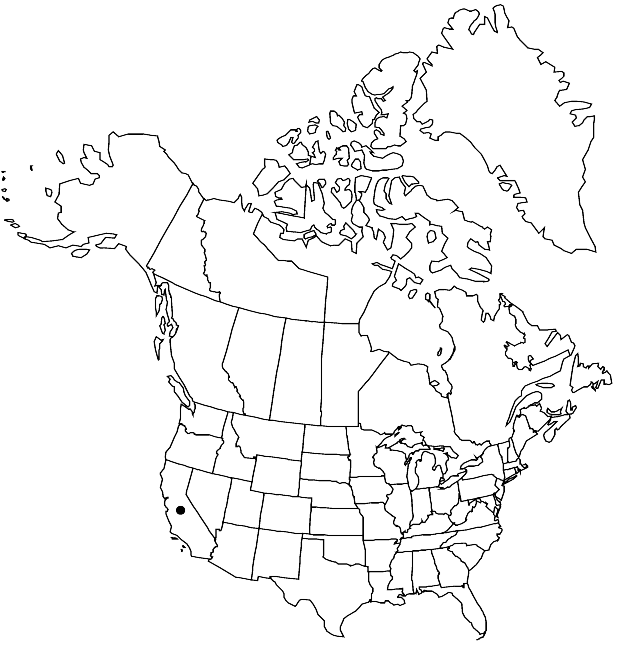Boechera shevockii
Harvard Pap. Bot. 11: 82. 2006.
Perennials; long-lived; (pulvinate); sexual; caudex woody (with persistent, crowded leaf bases). Stems 1 per caudex branch, arising from center of rosette near ground surface, 0.5–1 dm, puberulent proximally, trichomes (scattered), simple, 0.02–0.1 mm, similarly pubescent distally. Basal leaves: blade oblong-oblanceolate, 1–2 mm wide, margins entire, ciliate distally, trichomes (simple), 0.02–0.1 mm, surfaces glabrous. Cauline leaves: 3–7, not concealing stem; blade auricles absent, surfaces of distalmost leaves glabrous. Racemes 4–7-flowered, unbranched. Fruiting pedicels ascending, straight, 5–9 mm, glabrous. Flowers ascending at anthesis; sepals glabrous; petals lavender, 4–5 × 1–1.2 mm, glabrous; pollen ellipsoid. Fruits ascending, not appressed to rachis, not secund, straight, edges parallel, 2.5–3 cm × 1–1.5 mm; valves glabrous; ovules 30–34 per ovary; style ca. 0.5 mm. Seeds uniseriate, ca. 1.2 × 0.8 mm; wing distal or continuous, ca. 0.1 mm wide.
Phenology: Flowering Jun.
Habitat: Ledges of rock outcrops
Elevation: ca. 2500 m
Discussion
Boechera shevockii is a close relative of B. davidsonii, from which it is readily distinguished by having puberulent (versus glabrous) stems, shorter (4–5 versus 6–10 mm) petals, and much shorter (5–7 versus 30–80 mm) basal leaves. It is known only from the type specimen, from the southern Sierra Nevada in Tulare County.
Selected References
None.

